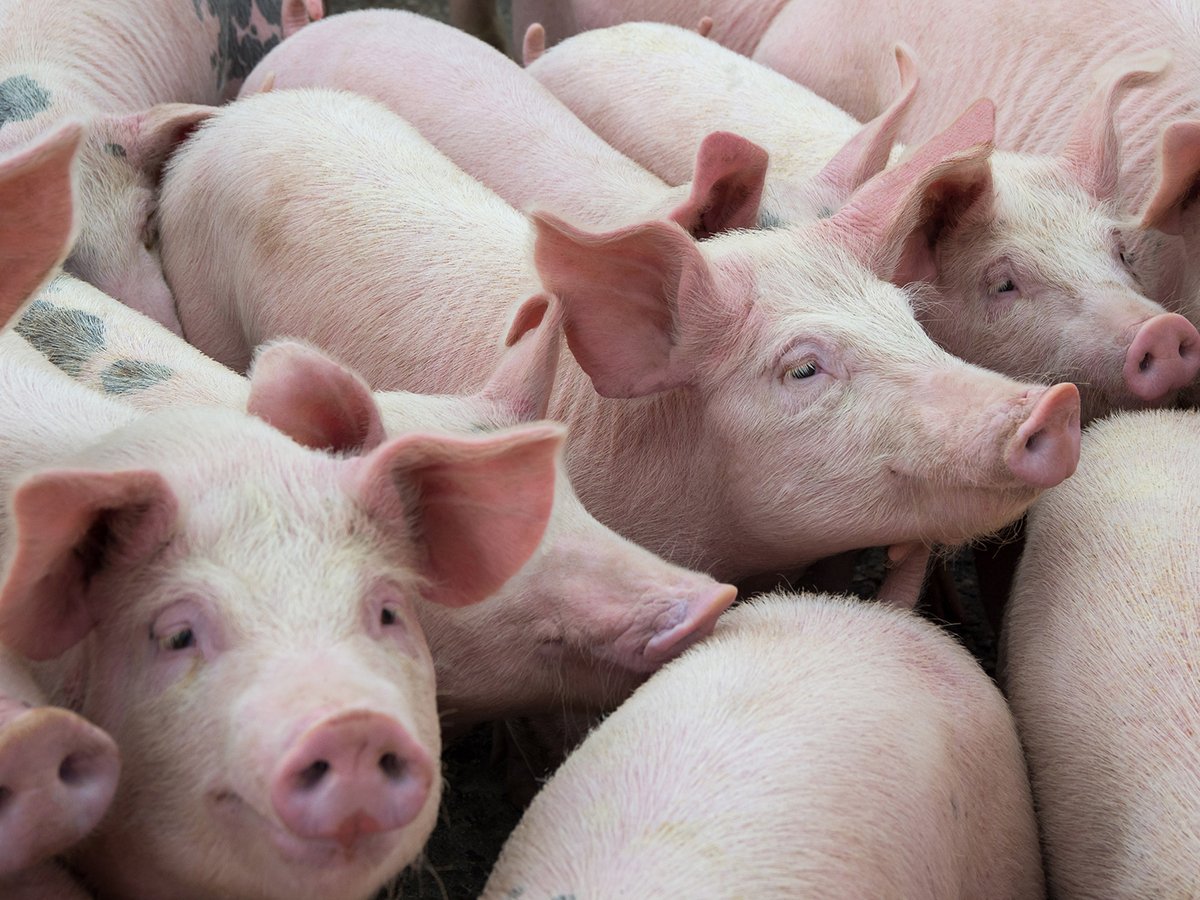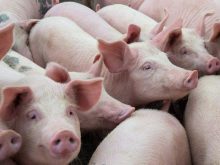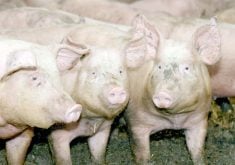Defying advice from most scientists, 182 species of cud chewing, multiple stomached creatures other than cattle have been caught for two years in the American BSE import net.
For the agricultural species on that list the harm to their markets may be greater than that done to beef.
Chris Clark of the Western College of Veterinary Medicine at the University of Saskatchewan said the logic that keeps Canadian cattle out of the United States is flawed “and keeping these other species out is really twisted.
“As if sheep, goats, deer and bison weren’t enough, they somehow added camelids (llama and alpacas) to the list,” he said.
Read Also

Quebec pork company calls for transparency around gene-edited pigs
Quebec-based pork company duBreton is calling for transparency around meats from gene-edited pigs on concerns that a lack of mandatory labelling will confuse consumers, and dilute certification claims. The organic sector is also calling for labelling rules.
“It was a knee-jerk reaction. But one (the Americans) haven’t been willing to back down from.”
Most scientists say the chance of BSE occurring naturally in a species other than cattle is remote.
In France, a single dairy goat is suspected to have contracted BSE while exotic deer in the London zoo are the only other cases known to exist outside of cattle.
Lamb and goat prices dropped 50 percent in many cases after the border closure. But prices in Western Canada have recovered significantly this spring.
Many producers chose to leave the industry in 2003 and 2004 causing the closure of a southern Saskatchewan feeding and finishing operation.
“The Canadian sheep industry, about a million animals, is too small to lobby government or a foreign power effectively on its own on something like this, so they get crushed … the bison industry is even smaller,” said Clark.
Bison were caught along with the other ruminant species.
“Bison, sheep, deer, they don’t get fed animal-based protein supplements,” he said.
Jim Warren of the Canadian Bison Council said the closure of the American border means bison producers are earning half the income they would be without BSE.
“We just don’t have the slaughter capacity. There are three federal plants and one with (European Union) status, so we can’t even get enough (younger than 30 month boneless) meat to market,” he said.
The loss of the higher priced American market has hurt many bison breeders, however it has put the industry in touch with its true meat-based market values.
Today only two federally inspected plants will custom process younger than 30 month bison Ñ Winkler, Man., and Kamloops, B.C. The plant at Fort Macleod, Alta., processes for the U.S. and the European Union, but no longer provides custom processing, preventing producers from retaining export premiums.
Murray Woodbury of the University of Saskatchewan said many in the bison industry are being realistic about the business and are finding ways to make their operations better.
“They haven’t done a lot of work on their production performance and deciding what genetic phenotypes they really want for the meat industry yet. If this keeps up, that’ll be next though,” he said.
Woodbury said the deer industry was already hurting from the closure of the U.S. market due to chronic wasting disease.
Alpaca and llama producers are also facing ruin.
Producers in Eastern Canada say their sales were based on American acreage and pet markets in the U.S. northeast. That loss has created a 50 to 70 percent drop in prices and sales volumes.
The March 7, 2005 American rule to open the border to live slaughter cattle, goats and sheep did make provision for the importation of live deer as well as camelids.
Canadian beef exports have bounced back to pre-BSE levels, propping up an industry still reeling from stagnant cattle sales.
Processors shipped 455,000 tonnes of beef and veal to 69 international markets in 2004, which is almost identical to the five-year average of 456,690 tonnes for the period between 1998 and 2002.
“It really represents a remarkable recovery,” said Ted Haney, president of the Canada Beef Export Federation.
“It is amazing that we’re able to maintain total shipment volumes without our big markets in Japan, South Korea, Taiwan and mainland China.”
Total value of 2004 exports amounted to $1.9 billion, down slightly from the $2.2 billion received from 521,000 tonnes of beef in 2002, which was a record year for exports.
Haney said markets that were lost in Asia, the Middle East, Central America and South America because of beef bans have been largely replaced by increased exports to three destinations.
“The strength of recovery … is really on the backs of Mexico, Hong Kong and Macau.”
Mexico purchased 87,000 tonnes of Canadian beef in 2004, up 12 percent from the previous record of 78,000 tonnes in 2002.
Hong Kong and Macau imported more than 10,000 tonnes of Canadian product, surpassing the previous combined high of 1,700 tonnes.
The United States is still the biggest market for Canadian beef.
Despite accepting only boneless beef from cattle younger than 30 months, American importers managed to bring in 336,714 tonnes of Canadian product in 2004, which is only a few thousand tonnes below the pre-BSE average.
If there is a downside in this recovery, it is that Canada has increased its reliance on the American market, a scenario the industry has been trying to avoid.
Seventy-four percent of Canadian beef sales went to the U.S. in 2004, up from 70 percent in 2002. Haney said that is still a vast improvement from the 1980s and 1990s when the U.S. bought 90-95 percent of Canadian beef.
During the first two months of 2005 Canada exported 68,000 tonnes of beef, slightly less than the same period a year ago. That is because the U.S. wasn’t shipping to Mexico for the first three months of 2004, leading to increased Canadian exports. The U.S. is now back in the Mexican market.
Haney figures Canada this year will export about the same volume of beef as it did in 2004. However, if some market access issues are resolved, it should handily exceed those levels and there have been encouraging developments on that front.
Japan is revising its regulations to eliminate mandatory BSE testing on animals younger than 21 months. The country is expected to complete that process during the last four months of 2005.
That would lead to the resumption of trade with a country that was once Canada’s third most important beef customer. South Korea would likely follow Japan’s lead.
“The last four months of this year are going to be a very exciting time with respect to re-establishing Canadian beef in Asia,” Haney said.
He anticipates Japan and South Korea would be in the market for up to 4,000 tonnes of Canadian beef per month. Once those critical Asian markets are fully restored, the beef industry can refocus on its goal of reducing dependence on the U.S. to 50 percent of sales by 2010.
However, there is an outside chance the American market will disappear if Montana judge Richard Cebull decides to extend his Canadian beef injunction to include boneless beef from cattle younger than 30 months.
“That would signal a massive crisis in our industry,” Haney said.

















